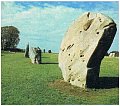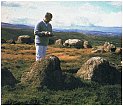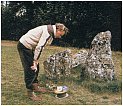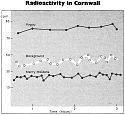
Avebury Ring On the hills and plains of Britain, as at Stonehenge in Wiltshire, Rollright in Oxfordshire, at Moel tyread Tŷ throughout Uchaf in Wales and at Cairn T in Eire, stand some of the most mysterious and intriguing of all the works of mankind: the circles of standing stones built by our ancestors in the late Neolithic and early Bronze Age, in the second millenium bc. Orthodox archaeologists have suggested, somewhat ingenuously, that they are simply sites of ancient ritual. In the 1950s and 1960s, Professor Alexander Thom of Oxford University concluded, from meticulous study of the lay-out and alignment of stone circles, that they reflect an ancient and sophisticated interest in metrology and astronomy. Beyond those respectable if sometimes controversial academic theories are the legends and folklore; of human sacrifice, of people turned to stone, or the stones themselves revolving or going down to the water to drink. And in the regions of speculation that Professor Glyn Daniel of Cambridge University termed “off-archaeology”, lies the vague but intriguing idea that there is a force called “Earth energy”, and that our ancient ancestors, more mystical and less distracted than we are, were able to detect that energy and built their circles at its points of focus. Earth energy remains a mystical rather than a mechanical concept. But my colleagues and I, over the past five years, combining our efforts under the general banner of the Dragon Project, have shown that stone circles do indeed emit anomalously high and anomalously low levels of several forms of radiation. Whatever they are, whatever purpose they serve, stone circles are not just points on a landscape.





